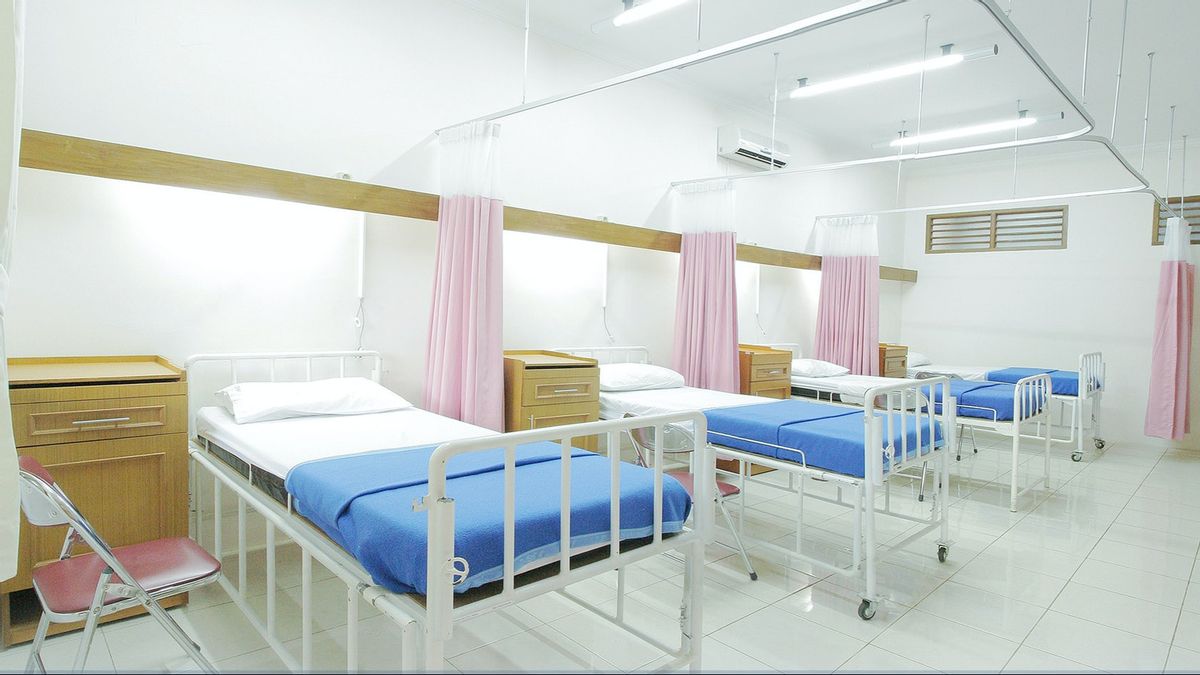JAKARTA - Spokesperson for the Indonesian Ministry of Health, Siti Nadia Tarmizi, stated that the occupancy of beds for treating COVID-19 patients nationally is still maintained at around 24.77 percent of the available capacity of 82,521 beds.
"As of today at 17:00 WIB, the occupancy of national hospital beds is still maintained at 24.77 percent. This means that there are still around 20,439 patients treated at the hospital out of a total of 82,521 intensive care and COVID-19 isolation places available," " said Siti Nadia Tarmizi in a written statement quoted by Antara, Monday, February 7.
Nadia said that the hospital wards were filled with patients with moderate, severe to critical symptoms. Meanwhile, patients with no symptoms or mild symptoms are directed to be treated in self-isolation or centralized isolation.
“Most of the patients currently hospitalized are asymptomatic or mild. Through the latest policy, HK. 02.01/MENKES/18/2022, all hospitals will treat patients with moderate to moderate symptoms who require intensive care, and patients with mild symptoms will be transferred to independent or centralized isolation," he said.
With this provision, Nadia hopes that the burden on health workers and hospitals can be reduced by up to 70 percent.
This strategy to accelerate the transfer of hospital functions for moderate and severe patients is the right step to reduce the burden on infrastructure and health workers.
"One of the crucial points in handling the pandemic, apart from health service infrastructure, is also about health workers. It is necessary to maintain health workers so that they are minimally exposed to COVID-19 so that services can be maximized," he said.
"With the increase in asymptomatic patients and mild symptoms being hospitalized, it increases the chances of our health workers being exposed and exhausted," Nadia added.
This strategy is also carried out so that people who are exposed to COVID-19 with moderate to critical symptoms can be handled optimally in the intensive room, including the need for oxygen therapy.
Although the number of patients being treated in hospitals is still maintained, said Nadia, the government continues to prepare for the resilience of health services during the spike in COVID-19 cases.
The government has reactivated telemedicine services, the task force for oxygen availability, medicines, and prepared centralized isolation which previously succeeded in controlling the COVID-19 wave in the July-August 2021 period.
"In addition to preparing health services, we urge the public to help prevent the spread by tightening health protocols and completing vaccinations. It will also protect vulnerable groups such as the elderly, children, and those with comorbidities who are most at risk of being treated intensively when infected with the COVID-19 virus," he said.
The English, Chinese, Japanese, Arabic, and French versions are automatically generated by the AI. So there may still be inaccuracies in translating, please always see Indonesian as our main language. (system supported by DigitalSiber.id)








